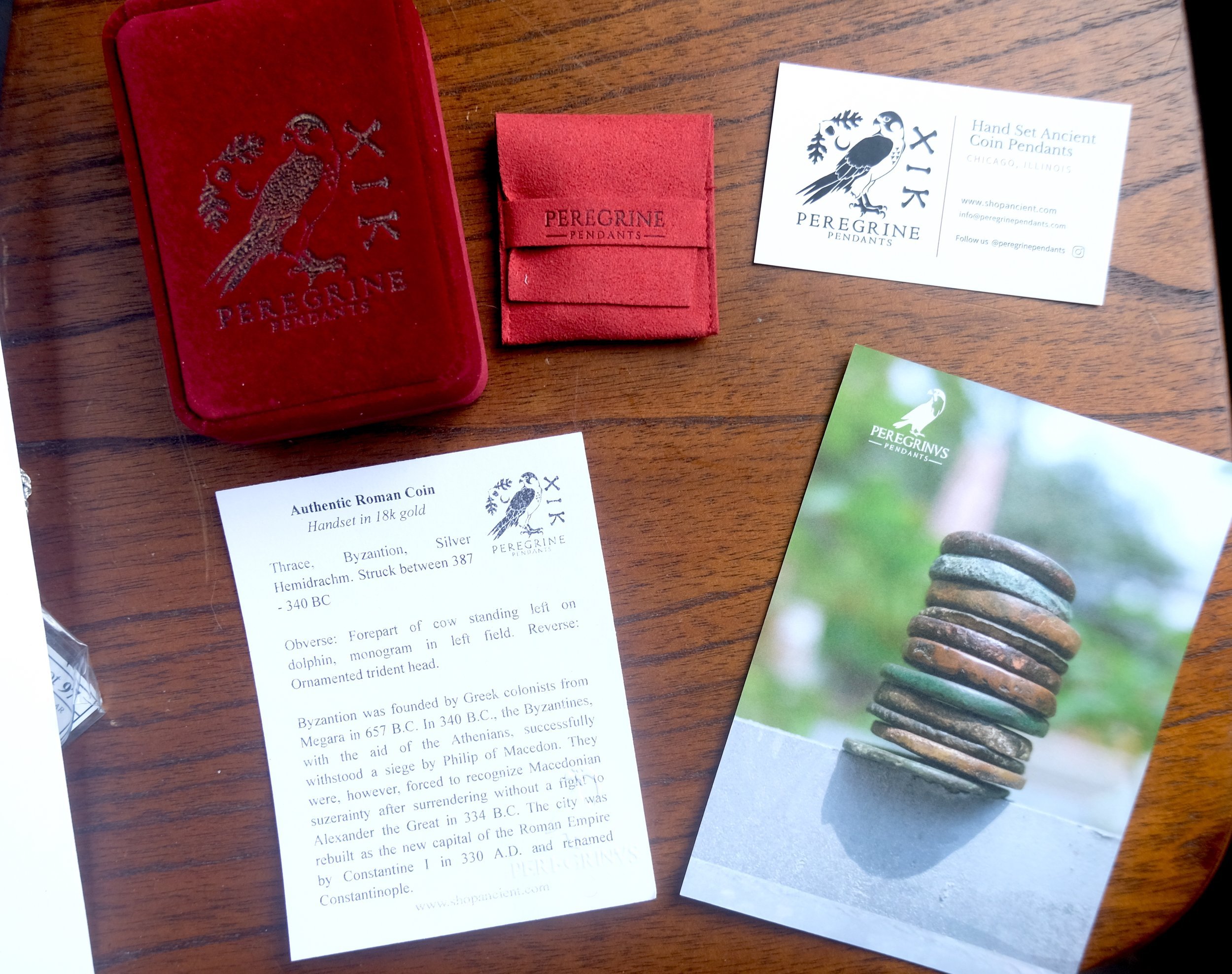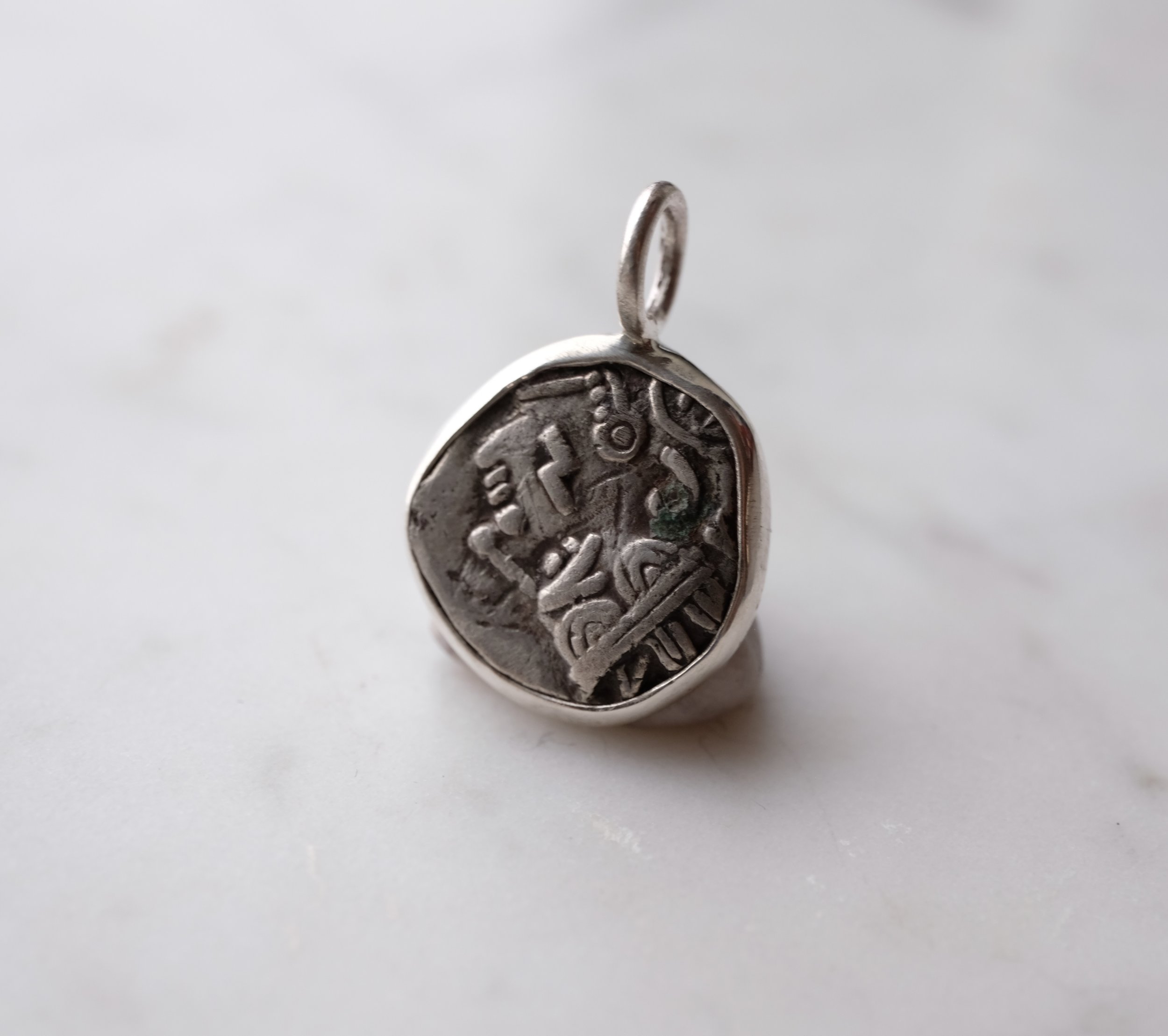 Image 1 of 3
Image 1 of 3

 Image 2 of 3
Image 2 of 3

 Image 3 of 3
Image 3 of 3




Byzantine Bronze - Cross and Christ
-- Coin information
Nicephorus III, follis
Obverse: bust of Christ facing
Reverse: Latin Cross, ornamented
Nikephoros III Botaneiates, Latinized as Nicephorus III Botaniates (Greek: Νικηφόρος Βοτανειάτης, 1002–1081), was Byzantine Emperor from 7 January 1078 to 1 April 1081. He was born in 1002, and became a general during the reign of Byzantine Emperor Constantine IX Monomachos, serving in the Pecheneg revolt of 1048–1053. His actions in guiding his forces away from the Pechenegs following the Battle of Zygos Pass, in which they suffered eleven days of harassment before finally reaching the Byzantine city of Adrianople, attracted the attention of fellow officers, and he received the title of magistros as a reward. Nikephoros served in the revolt of Isaac I Komnenos against the Byzantine Emperor Michael VI Bringas, leading forces at the decisive Battle of Petroe. Under the Emperor Constantine X Doukas he was made doux of Thessalonica, where he remained until c. 1065, when he was reassigned as doux of Antioch. While doux of Antioch, he repelled numerous incursions from the Emirate of Aleppo. When Constantine X died in 1067, his wife, Empress Eudokia Makrembolitissa, considered taking Nikephoros as husband and emperor but instead chose Romanos IV Diogenes. The need for an immediate successor was made pressing by the constant Seljuk raids into Byzantine Anatolia, and Eudokia, Patriarch John VIII of Constantinople, and the Byzantine Senate agreed that their top priority was the defense of the empire and that they needed an emperor to lead troops to repel the Turks. Nikephoros was the favorite candidate of the senate, but was in the field leading troops in Antioch and was still married. Romanos, once chosen to be emperor, exiled Nikephoros to his holdings in the Anatolic Theme, where he remained until he was brought out of retirement by the Emperor Michael VII and made kouropalates and governor of the Anatolic Theme.
All coin jewelry comes with the following items:
- Certificate which guarantees authenticity and provides background information (listed below) on the acquired coin(s)
- Jewelry pouch
www.shopancient.com
-- Coin information
Nicephorus III, follis
Obverse: bust of Christ facing
Reverse: Latin Cross, ornamented
Nikephoros III Botaneiates, Latinized as Nicephorus III Botaniates (Greek: Νικηφόρος Βοτανειάτης, 1002–1081), was Byzantine Emperor from 7 January 1078 to 1 April 1081. He was born in 1002, and became a general during the reign of Byzantine Emperor Constantine IX Monomachos, serving in the Pecheneg revolt of 1048–1053. His actions in guiding his forces away from the Pechenegs following the Battle of Zygos Pass, in which they suffered eleven days of harassment before finally reaching the Byzantine city of Adrianople, attracted the attention of fellow officers, and he received the title of magistros as a reward. Nikephoros served in the revolt of Isaac I Komnenos against the Byzantine Emperor Michael VI Bringas, leading forces at the decisive Battle of Petroe. Under the Emperor Constantine X Doukas he was made doux of Thessalonica, where he remained until c. 1065, when he was reassigned as doux of Antioch. While doux of Antioch, he repelled numerous incursions from the Emirate of Aleppo. When Constantine X died in 1067, his wife, Empress Eudokia Makrembolitissa, considered taking Nikephoros as husband and emperor but instead chose Romanos IV Diogenes. The need for an immediate successor was made pressing by the constant Seljuk raids into Byzantine Anatolia, and Eudokia, Patriarch John VIII of Constantinople, and the Byzantine Senate agreed that their top priority was the defense of the empire and that they needed an emperor to lead troops to repel the Turks. Nikephoros was the favorite candidate of the senate, but was in the field leading troops in Antioch and was still married. Romanos, once chosen to be emperor, exiled Nikephoros to his holdings in the Anatolic Theme, where he remained until he was brought out of retirement by the Emperor Michael VII and made kouropalates and governor of the Anatolic Theme.
All coin jewelry comes with the following items:
- Certificate which guarantees authenticity and provides background information (listed below) on the acquired coin(s)
- Jewelry pouch
www.shopancient.com
-- Coin information
Nicephorus III, follis
Obverse: bust of Christ facing
Reverse: Latin Cross, ornamented
Nikephoros III Botaneiates, Latinized as Nicephorus III Botaniates (Greek: Νικηφόρος Βοτανειάτης, 1002–1081), was Byzantine Emperor from 7 January 1078 to 1 April 1081. He was born in 1002, and became a general during the reign of Byzantine Emperor Constantine IX Monomachos, serving in the Pecheneg revolt of 1048–1053. His actions in guiding his forces away from the Pechenegs following the Battle of Zygos Pass, in which they suffered eleven days of harassment before finally reaching the Byzantine city of Adrianople, attracted the attention of fellow officers, and he received the title of magistros as a reward. Nikephoros served in the revolt of Isaac I Komnenos against the Byzantine Emperor Michael VI Bringas, leading forces at the decisive Battle of Petroe. Under the Emperor Constantine X Doukas he was made doux of Thessalonica, where he remained until c. 1065, when he was reassigned as doux of Antioch. While doux of Antioch, he repelled numerous incursions from the Emirate of Aleppo. When Constantine X died in 1067, his wife, Empress Eudokia Makrembolitissa, considered taking Nikephoros as husband and emperor but instead chose Romanos IV Diogenes. The need for an immediate successor was made pressing by the constant Seljuk raids into Byzantine Anatolia, and Eudokia, Patriarch John VIII of Constantinople, and the Byzantine Senate agreed that their top priority was the defense of the empire and that they needed an emperor to lead troops to repel the Turks. Nikephoros was the favorite candidate of the senate, but was in the field leading troops in Antioch and was still married. Romanos, once chosen to be emperor, exiled Nikephoros to his holdings in the Anatolic Theme, where he remained until he was brought out of retirement by the Emperor Michael VII and made kouropalates and governor of the Anatolic Theme.
All coin jewelry comes with the following items:
- Certificate which guarantees authenticity and provides background information (listed below) on the acquired coin(s)
- Jewelry pouch
www.shopancient.com
All coin jewelry comes with the following items:
- Certificate which guarantees authenticity and provides background information (listed below) on the acquired coin(s)
- Sterling silver chain and jewelry pouch


















